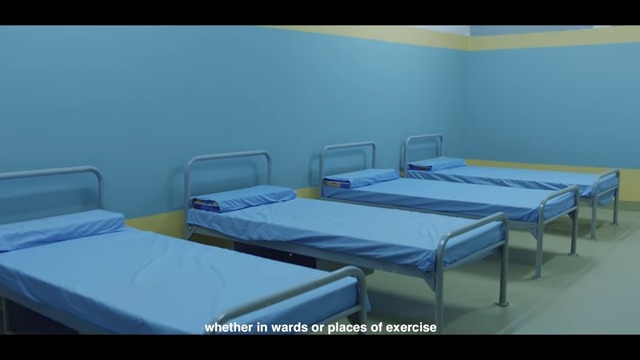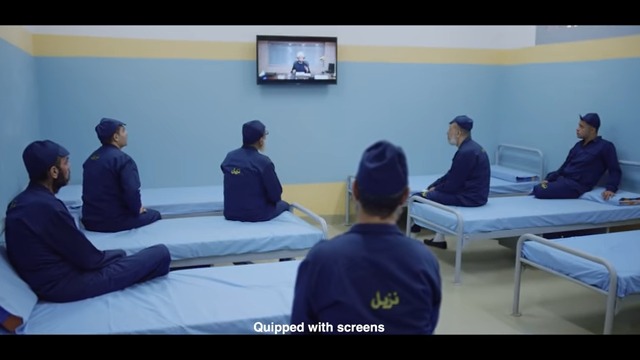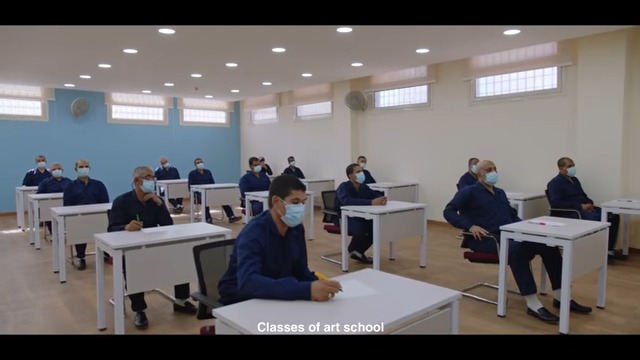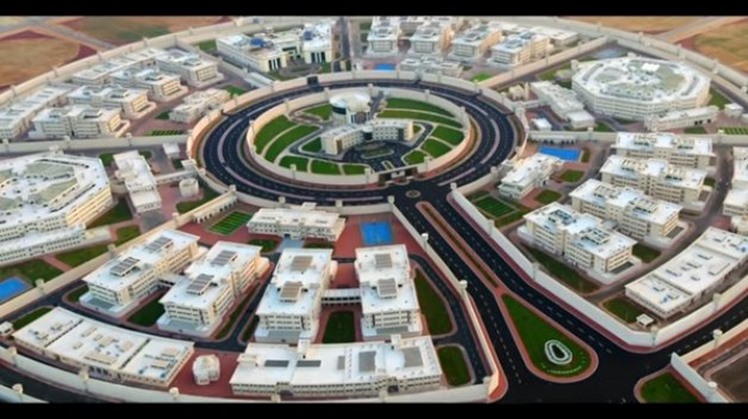CAIRO – 28 October 2021: Egypt’s Interior Ministry announced opening Wadi El Natron Correctional and Rehabilitation Center, saying it is managed in accordance with the international human rights standards.
In a video titled “the right in life,” the ministry said the opening of the center is part of “comprehensive development for the penal system” that has been carried out to transform it to rehabilitation system.
It is one of the largest transformation and rehabilitation centers in the world that takes into account improving the conditions of detention as the managing process is based on the international standards of human rights, the ministry said.
Based on these standards, the center will deal with inmates and make a comprehensive evaluation to the psychological aspects with the aim of creating an appropriate environment to correct their course and address the causes of their crimes, the ministry added.
“It is controlled through the Central Command Building by modern technologies and this center is a sophisticated model that controls the operation of the system with the latest technology in this field,” the ministry added.
The center is a “sophisticated” model that will be replicated away from the population mass instead of the old prisons that will be closed, the ministry added.
How the center is divided
The center is an integrated center with six sub-centers designed in a circular shape to provide 24/7 renewable ventilation and natural lighting to inmates, the ministry said.
Each sub-center has civilized and humanitarian inmates ward equipped with screens that display cultural, sports, entertainment, and rehabilitation programs to reform the intellectual and behavioral course.
There is also religious rites that enable the inmates to perform worship and teach them the forgiving, principles of religions, and also places for people with special needs, rehabilitation workshops, and dining halls.

There is also a dedicated room to renew pretrial detention for trial sessions, a library for developing cultural and intellectual skills, educational classrooms, classes for art school, and dedicated places that allow them to practice their hobbies in handicraft venues and artistry skills.
This includes painting, sculpture, and ceramics.
There are also indoor grounds for physical exercises and outdoor fields, in addition to some service places for each center.
The center’s management has used the assistance of experts to establish programs to benefit from the energies and time of inmates, in addition to the protocol of cooperation between the interior ministry and the ministry of education to establish technical, industrial, and agricultural education schools.
This will enable inmates overcome their missed stages of education and start new education stages.
Vocational training centers were also established in cooperation with the Ministry of Housing according to which it prepared plumbing, blacksmithing, electricity, paint, and solar energy workshops.
This will give inmates training courses.
The new center includes a special center for women with all needed services and a nursery aiming for enabling the mother to keep her baby throughout the lactation period.
Central Hospital
The new center is prepared with a central hospital to treat inmates with the help of proficient doctors, consultants, and well-trained medical staff.
The hospital is equipped with the most recent equipment and technologies with a capacity of 300 beds and 4 operation rooms, including all specialties.
It also includes 28 intensive care beds and isolation and emergency rooms.
There is a central pharmacy, department of laboratories, radiology, blood bank, a hemodialysis unit with 16 latest in the world machines and four nurseries.
There are also specialized equipped clinics at the highest level.
Among the departments of the central hospital a counseling center for AIDS and addiction patients under the supervision of the United Nations Office on Drugs and Crime through a medical cooperation protocol between the interior ministry and the UNODC’s office.
Rehabilitation program
Rehabilitation of inmates and preparation for integration into society after serving their sentences starts by their feeling of being productive individuals who contribute to a valuable job that provides an income that is estimated according to the amount of their contribution to the production process to help them after they are released, the ministry added.

The rehabilitation and production area includes open agricultural areas and greenhouses and the area of livestock and pourtly to produce high-quality meat with the highest quality standards and health requirements and the production workshops and factories.

This is where the production from the agricultural and livestock areas are processed with the aim of achieving food self-sufficiency in the center and marketing the surplus for the benefit of the inmates working there.
Industrial zone, visiting areas
The industrial zone in the center includes a metal furniture factory, a high-quality wooden furniture factory equipped with the most recent machines and equipment.
The outer area of the reform and rehabilitation center has outlets for the public to sell the various products of the Community Protection Sector as the return of sales is allocated to improve the conditions of the inmates of the sector.
In order to increase prevention, the families visits for the inmates are organized in a sophisticated manner by booking them through the Ministry’s web page and notifying them in order to facilitate the process on the days of visiting the guests.
Guests will arrive at the outer gates, which is prepared by a waiting area that is fully covered with solar cells.
After undergoing the sterilization procedures, the visitors are delivered to the centers by buses dedicated to meet their relatives among the inmates.
 Fri, Oct. 29, 2021
Fri, Oct. 29, 2021


